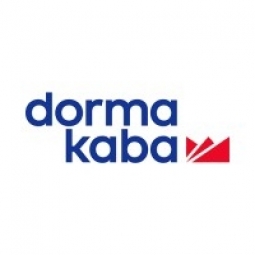公司规模
Large Corporate
地区
- Europe
国家
- United Kingdom
产品
- FSW-G glass folding sliding wall system
实施规模
- Enterprise-wide Deployment
影响指标
- Customer Satisfaction
技术
- 基础设施即服务 (IaaS) - 其他
适用行业
- 建筑物
- 建筑与基础设施
适用功能
- 设施管理
用例
- 楼宇自动化与控制
服务
- 硬件设计与工程服务
- 系统集成
关于客户
使馆花园是伦敦南部巴特西九榆树开发项目的一部分。它是九榆树地区重建的住宅和商业中心,由豪华公寓组成,为居民提供一系列独一无二的休闲设施,如天空泳池、一个连接两栋住宅楼的 25 米透明游泳池、一个专属电影院和其他专属休闲、健身和商务设施。
挑战
Embassy Gardens 是 Nine Elms 地区重建的住宅和商业中心,由豪华公寓组成,为居民提供一系列独一无二的休闲设施,例如天空泳池(一个 25 米长的透明游泳池,将连接两栋住宅楼)、专属电影院和其他专属休闲、健身和商务设施。挑战在于在拥有自己的内部冬季花园的住宅单元内安装一个系统,让居民无论天气如何都能享受户外空间。
解决方案
dormakaba 是全球领先的建筑和房间安全智能出入解决方案提供商,受开发商和承包商 Ballymore 委托,在 Embassy Gardens 制造和安装折叠式玻璃推拉墙系统。dormakaba 在拥有内部冬季花园的住宅单元内安装了 108 套 FSW-G 玻璃折叠推拉墙系统。FSW-G 系统简约而坚固,可透过玻璃面板获得最大可见度,每块面板上都有顶部和底部导轨,以实现最大稳定性。折叠运动可产生手风琴效果,便于打开和关闭,打开时可简洁地堆叠。
运营影响

Case Study missing?
Start adding your own!
Register with your work email and create a new case study profile for your business.
相关案例.

Case Study
Energy Saving & Power Monitoring System
Recently a university in Taiwan was experiencing dramatic power usage increases due to its growing number of campus buildings and students. Aiming to analyze their power consumption and increase their power efficiency across 52 buildings, the university wanted to build a power management system utilizing web-based hardware and software. With these goals in mind, they contacted Advantech to help them develop their system and provide them with the means to save energy in the years to come.

Case Study
IoT System for Tunnel Construction
The Zenitaka Corporation ('Zenitaka') has two major business areas: its architectural business focuses on structures such as government buildings, office buildings, and commercial facilities, while its civil engineering business is targeted at structures such as tunnels, bridges and dams. Within these areas, there presented two issues that have always persisted in regard to the construction of mountain tunnels. These issues are 'improving safety" and "reducing energy consumption". Mountain tunnels construction requires a massive amount of electricity. This is because there are many kinds of electrical equipment being used day and night, including construction machinery, construction lighting, and ventilating fan. Despite this, the amount of power consumption is generally not tightly managed. In many cases, the exact amount of power consumption is only ascertained when the bill from the power company becomes available. Sometimes, corporations install demand-monitoring equipment to help curb the maximum power demanded. However, even in these cases, the devices only allow the total volume of power consumption to be ascertained, or they may issue warnings to prevent the contracted volume of power from being exceeded. In order to tackle the issue of reducing power consumption, it was first necessary to obtain an accurate breakdown of how much power was being used in each particular area. In other words, we needed to be able to visualize the amount of power being consumed. Safety, was also not being managed very rigorously. Even now, tunnel construction sites often use a 'name label' system for managing entry into the work site. Specifically, red labels with white reverse sides that bear the workers' names on both sides are displayed at the tunnel work site entrance. The workers themselves then flip the name label to the appropriate side when entering or exiting from the work site to indicate whether or not they are working inside the tunnel at any given time. If a worker forgets to flip his or her name label when entering or exiting from the tunnel, management cannot be performed effectively. In order to tackle the challenges mentioned above, Zenitaka decided to build a system that could improve the safety of tunnel construction as well as reduce the amount of power consumed. In other words, this new system would facilitate a clear picture of which workers were working in each location at the mountain tunnel construction site, as well as which processes were being carried out at those respective locations at any given time. The system would maintain the safety of all workers while also carefully controlling the electrical equipment to reduce unnecessary power consumption. Having decided on the concept, our next concern was whether there existed any kind of robust hardware that would not break down at the construction work site, that could move freely in response to changes in the working environment, and that could accurately detect workers and vehicles using radio frequency identification (RFID). Given that this system would involve many components that were new to Zenitaka, we decided to enlist the cooperation of E.I.Sol Co., Ltd. ('E.I.Sol') as our joint development partner, as they had provided us with a highly practical proposal.

Case Study
Intelligent Building Automation System and Energy Saving Solution
One of the most difficult problems facing the world is conserving energy in buildings. However, it is not easy to have a cost-effective solution to reduce energy usage in a building. One solution for saving energy is to implement an intelligent building automation system (BAS) which can be controlled according to its schedule. In Indonesia a large university with a five floor building and 22 classrooms wanted to save the amount of energy being used.

Case Study
Powering Smart Home Automation solutions with IoT for Energy conservation
Many industry leaders that offer Smart Energy Management products & solutions face challenges including:How to build a scalable platform that can automatically scale-up to on-board ‘n’ number of Smart home devicesData security, solution availability, and reliability are the other critical factors to deal withHow to create a robust common IoT platform that handles any kind of smart devicesHow to enable data management capabilities that would help in intelligent decision-making

Case Study
Splunk Partnership Ties Together Big Data & IoT Services
Splunk was faced with the need to meet emerging customer demands for interfacing IoT projects to its suite of services. The company required an IoT partner that would be able to easily and quickly integrate with its Splunk Enterprise platform, rather than allocating development resources and time to building out an IoT interface and application platform.








